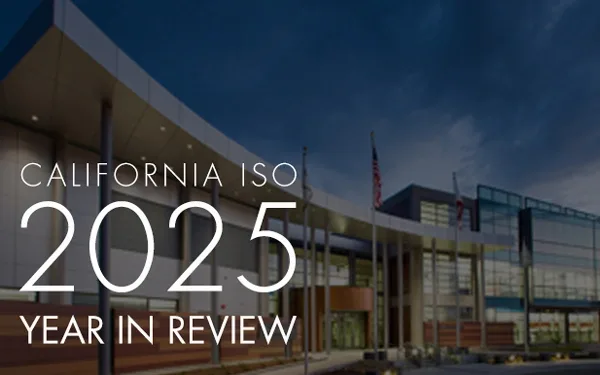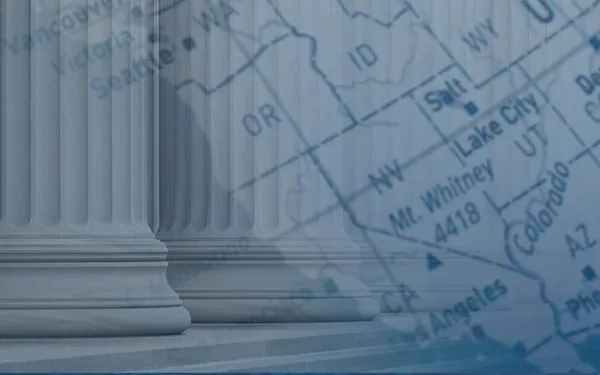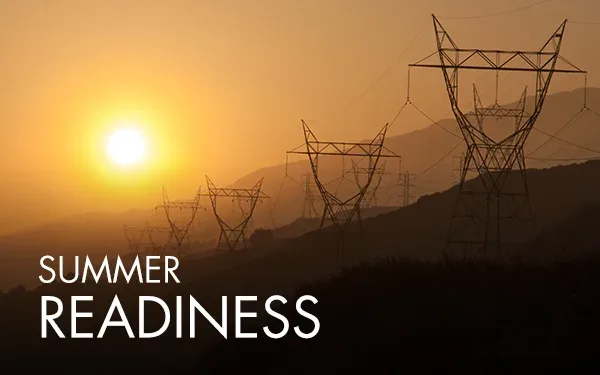The great transformation: Designing the grid of the future
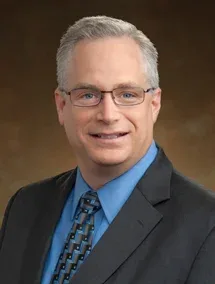
California ISO executives and staff members are frequently asked to address energy conferences across the U.S. and abroad. The following is a keynote speech from Mark Rothleder, the ISO’s Senior Vice President and Chief Operating Officer, delivered at “The Great Transformation: Designing the Grid of the Future” conference hosted Jan. 16 by Cleantech San Diego, a non-profit membership organization promoting clean-tech solutions in Southern California.
Thank you Jason and thank you Cleantech San Diego for organizing this important conference and having me as your keynote speaker. I love what I do. It provides a sense of purpose and innovation and it’s always fun to talk about it with fellow energy practitioners.
As everyone here knows, California is still in the early stages of the great transformation that is the focus of this conference – to design the clean, reliable and affordable grid of the future.
Things are moving and changing very quickly and as you are all aware, we have no shortage of consequential challenges or exciting opportunities for innovation to keep us busy.
If we take a step back for a moment, the task can feel daunting. The electrical grid managed by the California Independent System Operator is a 50-gigawatt bulk power system. Although we are using more renewable power all the time, including at times having more renewable production than demand, the California Energy Commission reports that we still get more than a third of our annual electricity from natural gas resources.
So, we are in the process of taking a power system that drives the fifth largest economy in the world, a system historically run predominantly on thermal energy and fossil fuels, and replacing those energy sources with power that is clean, renewable and – here is the rub – variable or intermittent.
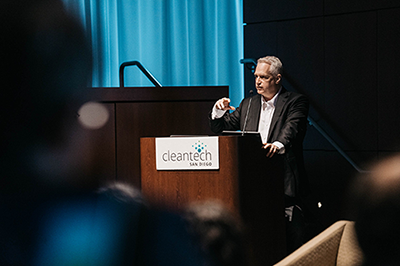
Photo courtesy of Cleantech San Diego
Which helps explain why our 50-gigawatt system needs to be transformed and expanded into about 120 gigawatts of clean, carbon-free energy by 2045, as required by California’s landmark Senate Bill 100 signed into law by former Gov. Jerry Brown in 2018.
We need to replace the system with that magnitude of resources because the characteristics of the resources we use to generate electricity today are changing. They are not a one for one replacement and this level of replacement will require us to add about 7,000 megawatts (MW) of new clean power each year for the next two decades.
It’s no longer just base-load or firm dispatchable resources that are used to balance supply and demand, where a utility flips a switch and the turbines start to spin and produce energy whenever needed. The resources we’re adding today are variable. Some of the energy gets produced during the day, when we have an abundance of sunshine. Some gets produced only when the wind is blowing. Some needs to be stored for dispatch at different hours of the day, when the original resource may not be available but demand is peaking, which is the situation today in California and the West.
In other words, we need a group of resource capabilities in excess of just our projected load levels. And even these load levels are going to continue to increase by nearly 60% as a result of accelerated electrification of transportation and buildings. This is all part of the state’s commitment to play a leadership role in mitigating the impacts of our changing climate.
As we do all that heavy lifting with our partners in state government and our partners and stakeholders throughout California and the West, we are also being confronted with the increasingly extreme impacts of that changing climate.
Impacts that make everything in the energy sector more challenging. From extreme heat, cold and drought to the threat posed to our infrastructure from wildfires and other natural disasters. Even as I speak, California is helping the Northwest as it is experiencing the effects of an arctic blast.

We continue to add resources, upgrade and fine-tune our technological capabilities and manage through a variety of external uncertainties. The state has also stepped up efforts to better engage with consumers through automated demand response programs so consumers use less electricity when demand creates reliability concerns.
Consumers are also doing their part by embracing more distributed energy resources such as electric vehicles, home solar and battery installations, smart appliances, thermostats and other devices. Through all this change and grid evolution, we have to make sure to keep the lights on for the people we serve.
So, yes, the task can seem daunting. We really are all in this great transformation together, and no one has done this before at this scale. No one has totally remade a geographically expansive power system in little more than a generation. People around the country and around the world are watching to see how California gets this done. And we are getting it done.
Our vice president for system operations, a smart colleague of mine by the name of Dede Subakti, has said this is like trying to do a major repair job on your car, akin to changing the engine, tires and everything else without stopping because you need to keep driving to reach your destination safely and on time.
We have smart, talented grid operators at the California ISO managed by Dede and their job has become more complicated with the evolving grid and climate change. As you can imagine, they undergo extensive training and increasingly rely on advanced computing technology, which we are in the process of upgrading. And they learn as conditions and resources change. They learn, and they adapt. That is the very nature of managing a dynamic, evolving grid like the one we have in California.
So, while the challenges are significant, I am happy to report that great progress is being made. Progress that is helping to make my job easier and allows me to sleep more soundly at night.

In calendar 2023 alone, working with our partners in state government, with the utilities and other load-serving entities, the ISO successfully onboarded 5,660 megawatts of new power to the grid that was fully operational as of December 31. We will be bringing another 1,134 MW online that will reach commercial operation in the next six to eight months, with much more on the way in the years ahead.
A big part of the new capacity is our growing fleet of lithium-ion batteries. At the end of 2020, the grid had 220 MW of battery storage. Three years later, at the end of 2023, our battery capacity on the grid had grown to 7,188 MW. That is a more than 30-fold increase and an impressive California success story because, despite an occasional glitch, the 4-hour batteries have performed very well and we have been able to dispatch this stored power for the net peak evening hours in the day when it’s most needed.
Which is partly why at the ISO we were able to go into last summer for the first time in several years much more confident that we had enough resources available to meet demand during our most challenging months of the year.
I am also happy to report that we were correct. A little lucky, too, because the weather in California was relatively moderate this past summer and the state’s hydro conditions had improved. Moderate weather and better hydro notwithstanding, the grid is becoming more resilient from all the hard work we and many others have done in recent years to enhance reliability.
The hard work and good fortune enabled us to get through the summer of 2023 with the lights on and no major service disruptions. Unlike the past three summers, we also had no Flex Alerts in 2023 calling on the public to voluntarily conserve to help ensure that supply was sufficient to match demand.
For a variety of reasons, we did have a few emergency watch events in July. Three as a matter of fact, related mainly to some fast-changing market dynamics and record sustained heat in the Desert Southwest. That affected resource availability from our market partners outside of California, and we are becoming more sensitive to those dynamics, learning from them and setting ourselves up to be better able to negotiate through such conditions in the future.
But overall, the grid managed by the California ISO was mostly drama-free last summer, which was good news for us all. It was also in stark contrast to the past three years when we called a total of 29 Flex Alerts and issued a variety of emergency notifications. As you may recall, we needed rotating outages for a brief time in August 2020 to balance the system during an intense regional heat wave. In the summer of 2021, we had a close call during another heat wave when a big wildfire in Southern Oregon limited our ability to import power from the Pacific Northwest. And in 2022, during a record-setting 10-day heat event in early September, the Governor’s Office directed a wireless emergency alert to most of the state to reduce demand and avoid service disruptions.
This also speaks to the increased premium we put on close collaboration and coordination throughout the region. With finite resources, climate change and the West’s growing interconnectivity, it is more important than ever to know where our neighbors are when it comes to supply. To know what demand looks like in neighboring balancing authority areas. To know their supply and demand balances and reserve margins, to know with certainty whether they or we have energy that can be moved to where it’s needed the most.

Over the past few years, enhanced regional coordination – as well as closer coordination with our regional operating partners – have become a vital resource in and of itself. Which is why we have taken a number of important steps to collaborate, collectively plan and more aggressively communicate with our stakeholders and partners throughout California and the West.
It is also why we have spent the past two years working closely with a wide range of stakeholders in California and neighboring states to establish an extended day-ahead electricity market (EDAM).
Our plan is to build on the success we have seen with the ISO’s Western Energy Imbalance Market, which uses sophisticated technology to find and deliver the lowest-cost energy to its members in real-time. The market also enhances reliability and provides significant environmental benefits through the reduction of renewable energy curtailments during periods of oversupply.
Since its launch in 2014, this real-time market has produced more than $4.6 billion in benefits to market participants and their consumers, with about $1.7 billion or almost 40% having benefited California consumers. The market now has 22 participants in 11 Western states and covers about 80 percent of demand in the region.
By extending those same types of benefits to the much larger day-ahead timeframe, independent study after independent study have shown that those benefits can be significantly expanded over a broad geographic footprint.
A few days before Christmas, we received good news from the Federal Energy Regulatory Commission that it approved the vast majority of our tariff changes developed with our stakeholders that will enable us to launch that extended day-ahead market in 2026.
Two large energy providers, PacifiCorp, which serves customers in six states, and the Balancing Authority of Northern California, which includes the Sacramento Municipal Utility District, have already said they intend to join the market. Other entities are now seriously considering doing the same. Now that most of our revised tariff has been approved, we feel confident about those prospects.
With this operational perspective in mind, let me now pivot to the infrastructure side of the equation. There is a great deal going on in this space as well. There is also a lot coming and a lot of exciting innovation.
In the California ISO’s 2022-2023 transmission plan approved by our Board of Governors last May, we recommended investments of $7.3 billion for 45 transmission projects for system expansion and upgrades.
These projects are essential to help support integration of all the new power that will need to be developed and onboarded each year between now and 2045 to meet California’s clean-energy objectives.
The 2022-2023 plan also took a more proactive approach to better synchronize power and transmission planning, interconnection queuing and resource procurement. Drafted in close coordination with the California Public Utilities Commission and California Energy Commission, the plan identifies additional transmission and resource capacity associated with designated geographic zones making the most economic and operational sense for such development. To bring this more coordinated approach full circle, the ISO will also give priority to interconnection requests located within those same zones in its generation interconnection process.
As an addendum to that transmission plan, our Board also voted in December to conditionally advance development of a 285-mile link in a transmission pathway that would deliver Idaho wind to California and the Southwest.
Earlier in the year, we had more positive news on the transmission front with Board approval of an innovative subscriber transmission owner model that will enable construction of a new transmission line to connect to our grid and deliver clean wind energy to California from Wyoming. The Federal Energy Regulatory Commission, in reviewing our application for the new model, has asked for some additional information and we hope for approval sometime this year.
This new model is significant because it would allow transmission to be built and financed without affecting the ISO transmission access charge. Only subscribers using that line would pay for it and we believe the new model can be used more broadly in the West on future projects. This can save time and money in getting new transmission projects up and running.
In addition to our 10-year transmission planning horizon that gets updated every year, we have also started to examine future transmission needs over a 20-year timeframe. Our first 20-Year Transmission Outlook was published last February and is now being updated. The 20-Year Outlook examined what’s projected to be needed over the longer term not only to identify those future requirements, but also to help inform decisions on infrastructure being made right now.
We are working hard to be proactive and creative, looking at offshore wind, wind energy from out of state and other resources and making sure we have the infrastructure in place to move new energy from generator to consumer. With the long lead times intrinsic to such transmission upgrades, the longer-term outlook is a real necessity, and this work is also being done in close consultation with our state partners.
At the same time, we have been working diligently with stakeholders for the past year or so to make significant improvements to the ISO’s interconnection process for generating capacity wanting to connect to the grid.
As California has accelerated its pace for adding more renewable energy to the system, the applications to our interconnection queue have grown exponentially, overwhelming the system and our ability to analyze them and determine which can reach the finish line in a timely manner.
We are continuing our work with stakeholders on those reforms and expect to have a draft final proposal next month. Once we have processed comments from stakeholders after the new proposal is published, we anticipate seeking Board approval in May.
Delays associated with interconnections are not unique to California. To one degree or another, this is occurring in various parts of the nation. There has been legislation and an important FERC order designed to make the planning, siting, financing and construction of new transmission infrastructure more efficient. These efforts are welcome and helpful. But this is a complex and crucial piece of the puzzle. We have been working diligently with our stakeholders to get it right.
This is actually a good problem to have. We have strong competition in the development community and a large amount of resources wanting to connect. We need a process that gives us the time and wherewithal to determine deliverability and whether a project can actually do what it needs to accomplish.

So, as you can tell, we have been busy at the ISO, but progress is being made across the region. Good things are happening all the time. Resources are being procured. Big work is getting done on transmission. The interconnection process is being improved. Interconnectivity and coordination in the West are on the rise. Exciting new market opportunities are being advanced.
The grid is stronger. We have more resources and tools at our disposal. In this line of work, there is always more to be done and obstacles to overcome. I am confident if we continue to work collectively on the task at hand, we may experience some bumps in the road but we will learn and adjust. And we will succeed – on a timely basis – in building the clean, affordable and reliable system we all want and need.
Thank you very much.
